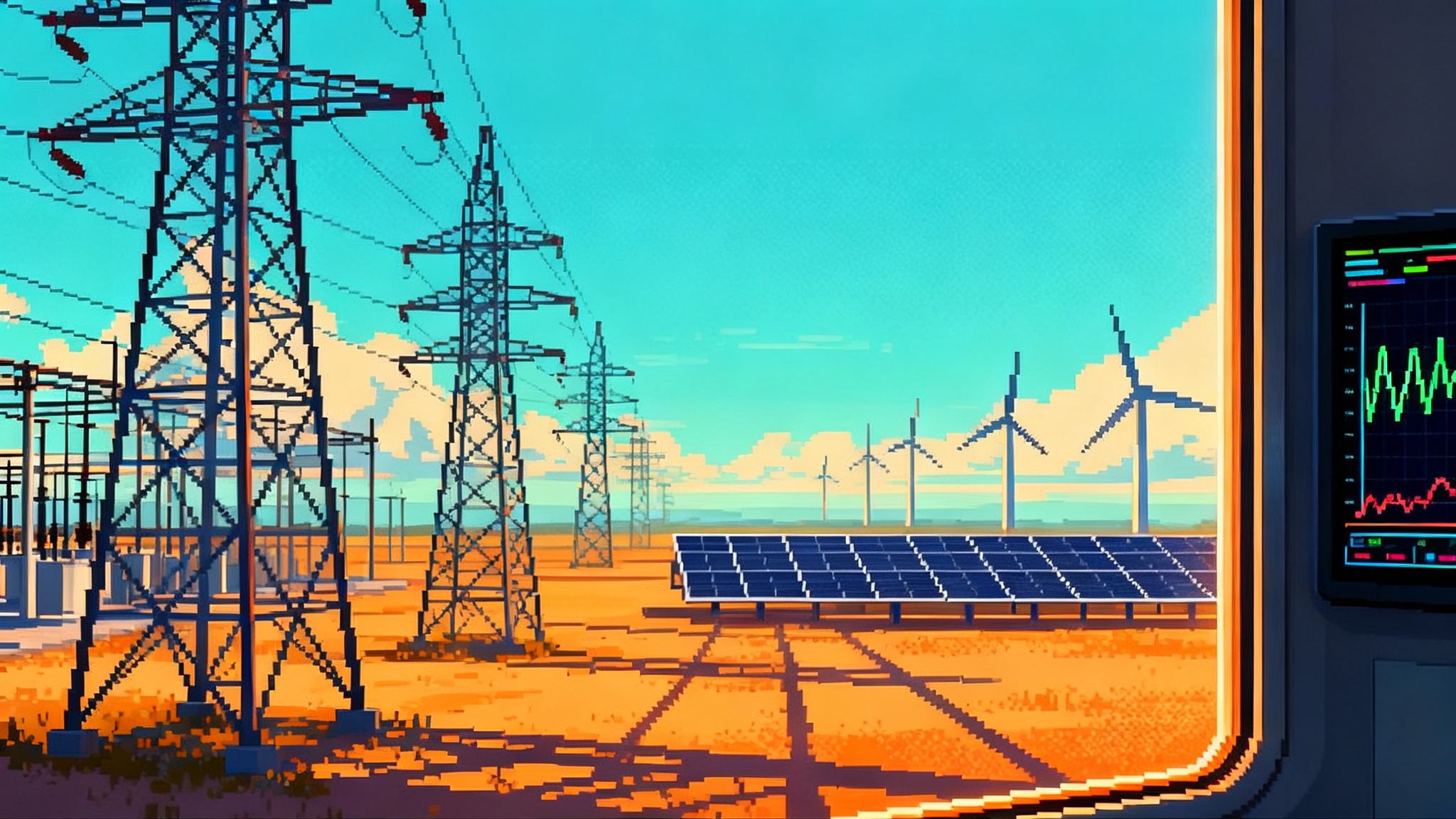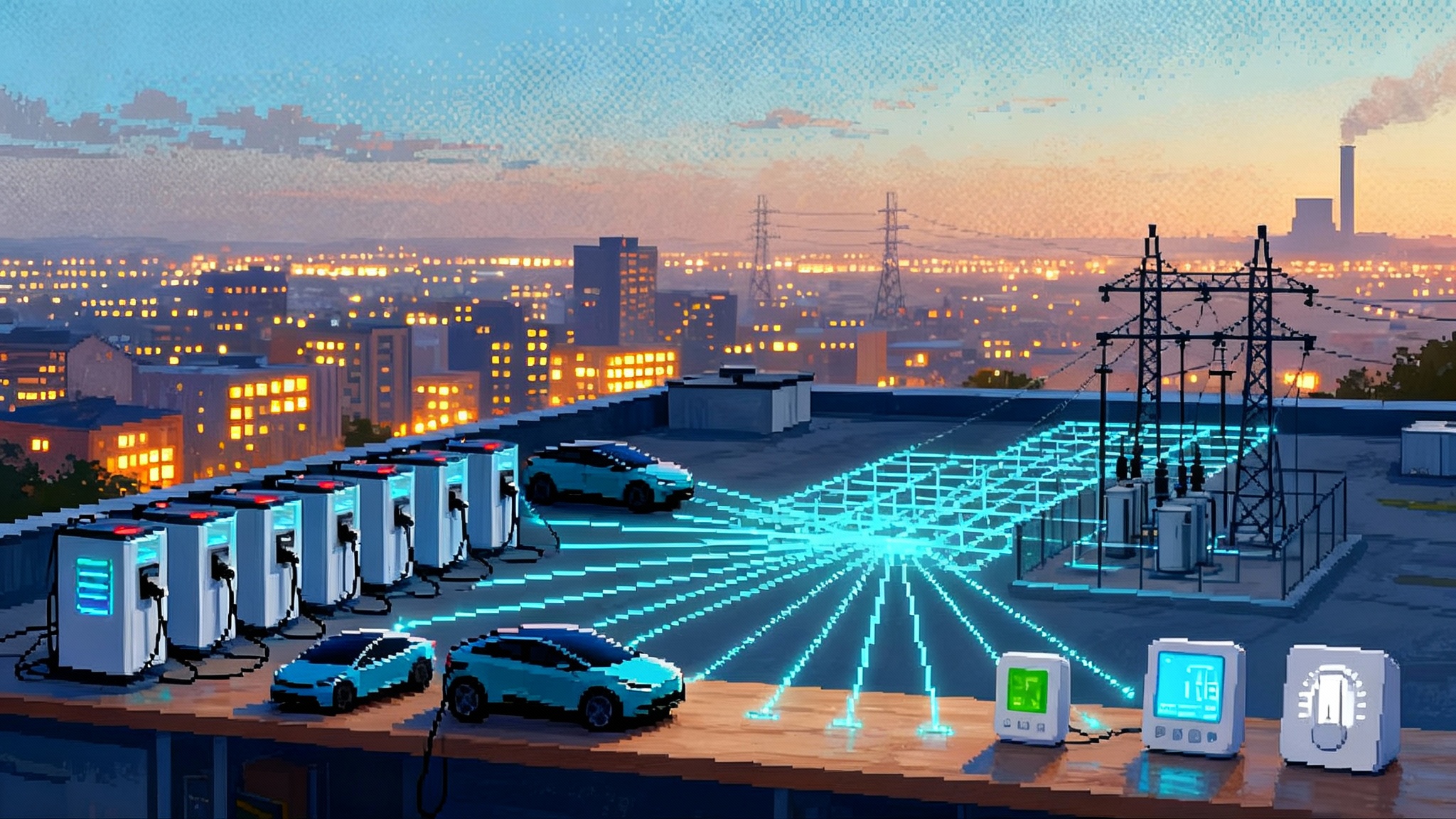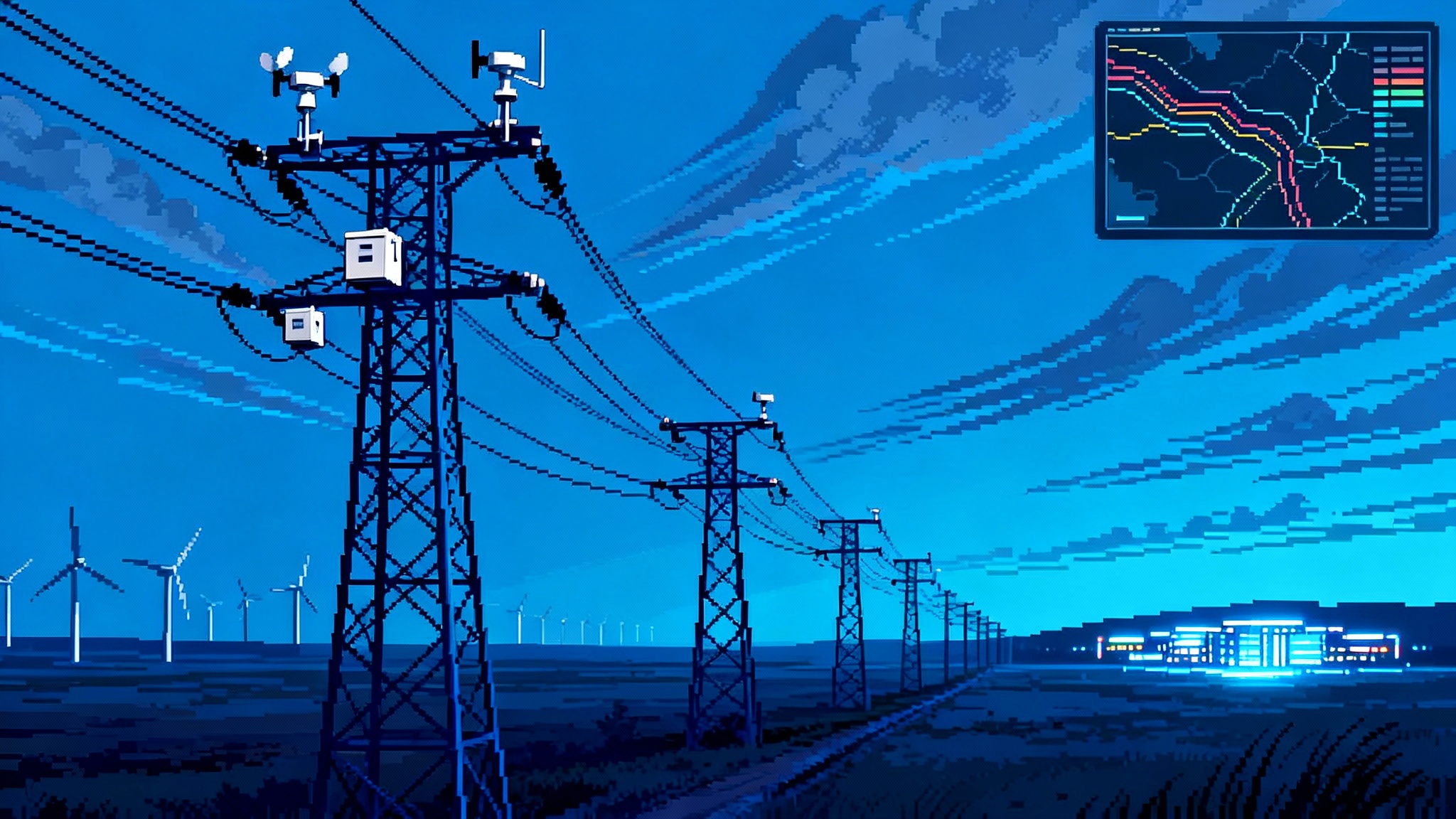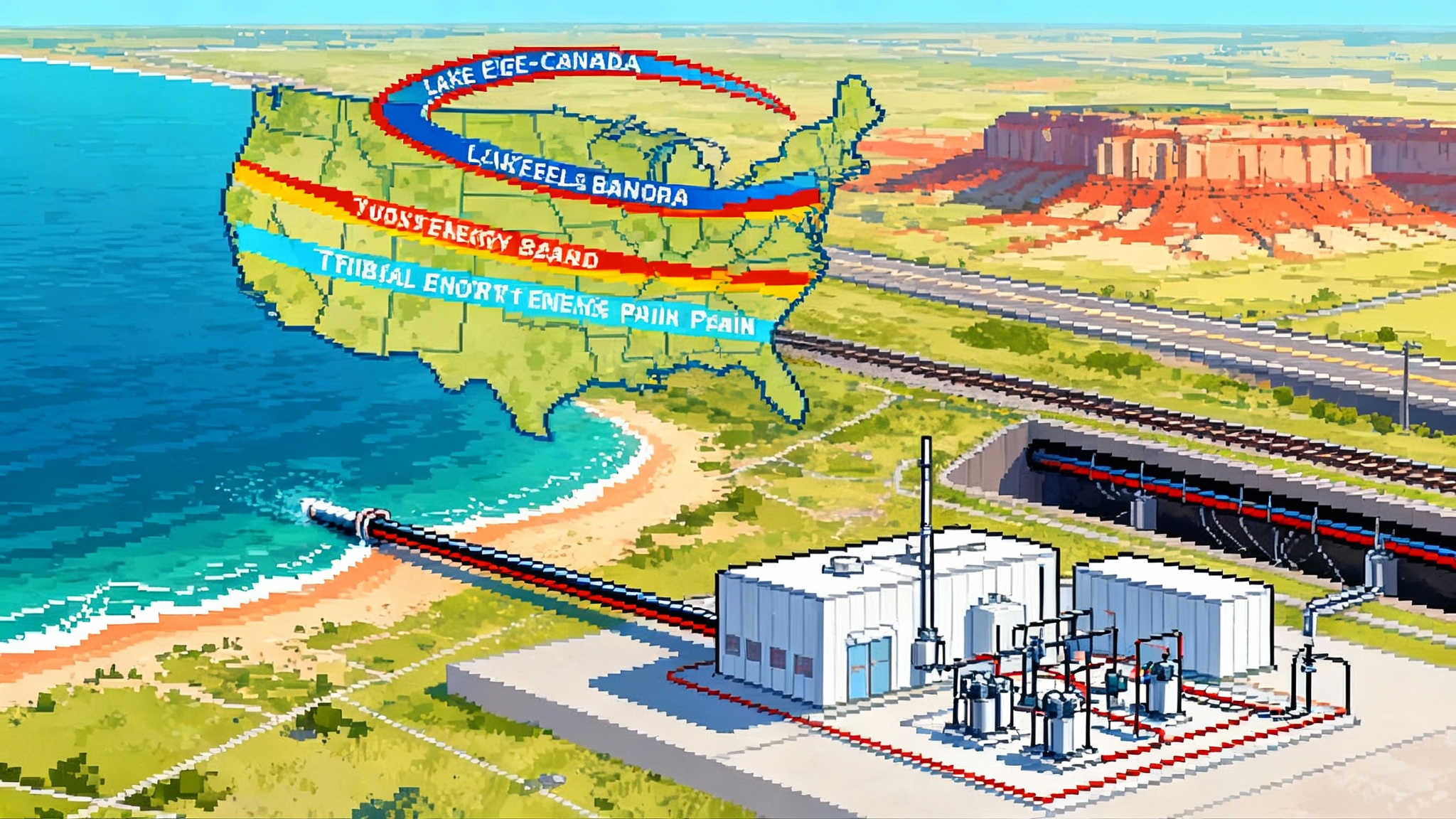Mandatory Ride-Through: FERC’s 2025 IBR rules hit the grid
On July 24, 2025 the Federal Energy Regulatory Commission approved reliability standards that require wind, solar, and battery plants to ride through grid disturbances. Here is what changes for owners, vendors, and investors between now and 2030, including timelines, compliance steps, and financing impacts.

The turning point for wind, solar, and storage
On July 24, 2025 the Federal Energy Regulatory Commission (FERC) approved a core set of reliability standards for inverter-based resources. These standards require wind, solar, and battery plants to stay connected and support the grid during voltage and frequency swings rather than tripping offline. In FERC’s words, the goal is to make inverter-based resources behave like dependable grid assets, not fragile bystanders. FERC’s order and news release capture the shift plainly: ride-through is now mandatory.
This package caps several years of work by the North American Electric Reliability Corporation (NERC) and the industry. It includes three pillars that together change how inverter-based plants are built, tuned, monitored, and managed during disturbances:
- PRC-029-1 ride-through performance. Plants must keep injecting current through defined disturbance zones, recover output in a controlled way, and avoid momentary cessation that strips power from the grid when it is needed most.
- PRC-028-1 and PRC-002-5 monitoring. Owners must capture high-resolution electrical data from wind, solar, and battery plants during events. That data becomes the evidence for both compliance and model validation.
- PRC-030-1 event mitigation. If an abnormal inverter-based event occurs, owners must analyze, correct, and prevent recurrences.
FERC also approved PRC-024-4, updating protection settings for synchronous machines and legacy wind types so that inverter-based behavior sits cleanly alongside the rest of the fleet. NERC’s summary places these approvals and implementation directives on one page and notes the Commission’s formal name for the ride-through order, Order No. 909. See NERC’s 2025 FERC orders overview.
Think of this as upgrading the grid’s drivers from cautious learners to competent professionals. The cars are still the same cars, but their braking and traction control are now switched on and standardized. The result is smoother traffic at higher speeds with fewer pileups. This standardization complements efforts like the interconnection fast-track, which is pushing projects to connect faster with clearer technical expectations.
What changes on the ground for owners and vendors
The new standards do not live in a compliance binder. They live in firmware and settings:
- Plant controller firmware. Owners and vendors must update central plant controllers and inverter firmware to implement approved voltage and frequency ride-through curves, reactive current injection during faults, and controlled post-fault recovery. This is not a checkbox; it is code and parameters that must be field-tested.
- Phase-locked loop tuning. The phase-locked loop is the software ear an inverter uses to follow the grid. Poorly tuned loops overreact to fast angle changes and can drop current. Expect adjustments to PLL bandwidth and filters so inverters remain synchronized through deeper faults and faster angle jumps.
- Protection setpoints. Protective relays and inverter tripping thresholds must be revised so they do not yank a plant offline within the new must-ride-through zones. Synchronous-friendly settings are not sufficient; inverter-based thresholds need to align with PRC-029-1.
- Event recording hardware. Owners must add or upgrade sequence-of-events recorders, fault recorders, and frequency disturbance recorders at plant points that actually capture inverter behavior. This includes time stamping, sampling rates, and storage sufficient to reconstruct events.
- Model updates and validation. Planning and operations models must be re-parameterized and validated with disturbance data. Dispatch studies that assumed momentary cessation for inverters will need to be retired. New models must pass utility and regional review using event playback and benchmark tests.
- Procedure and training. Control room and field procedures must change. Operators need playbooks for low voltage ride-through, and site technicians need checklists for firmware rollouts with rollback steps, version control, and evidence capture.
This work will touch every major original equipment manufacturer. For wind, names like GE Vernova, Vestas, and Siemens Gamesa will issue controller updates and new parameter sets. For solar and storage, inverter and power conversion suppliers such as SMA America, Power Electronics, Sungrow, and Tesla will provide firmware and recovery settings tuned to the new curves. Some owners will also retrofit plant-level controller hardware from vendors like Emerson, Schneider Electric, and Siemens to gain functions such as faster voltage support and coordinated ramp-back.
The compliance map between 2026 and 2030
The timelines matter because they sequence design, data, and operations work in a way that avoids chaos.
- Effective dates. FERC’s rule approving the ride-through standard is effective 30 days after it is published in the Federal Register. PRC-029-1 itself becomes effective on the first day of the first calendar quarter 12 months after the order takes effect. In practice, that points to October 1, 2026 for the baseline ride-through requirements to take hold.
- Design first, then operations. For Bulk Electric System plants, the design obligations in PRC-029-1 Requirements 1 to 3 are due by the standard’s effective date. The full operational obligations snap in as soon as a plant has the required disturbance monitoring in place under PRC-028-1 and PRC-002-5.
- Non-Bulk Electric System plants. Certain non-Bulk Electric System inverter-based plants that meet NERC’s Category 2 criteria have later design deadlines that align with January 1, 2027 or the standard’s effective date, whichever is later. Their operational obligations also begin once compliant monitoring is installed.
- Disturbance monitoring ramp. PRC-028-1 and PRC-002-5 use a phased approach that ends no later than January 1, 2030. Owners must equip a defined fraction of plants within three years and reach full coverage by the 2030 date. This ensures real event data is flowing before operations compliance hinges on it.
- Event mitigation standard. PRC-030-1 becomes effective on the first day of the first calendar quarter 12 months after the relevant approval. It requires owners to analyze, correct, and document fixes for abnormal events. For non-Bulk Electric System plants, compliance dates align with January 1, 2027 or the effective date.
- Exemption window for legacy hardware. PRC-029-1 includes a targeted exemption pathway for legacy plants that cannot meet ride-through performance without hardware changes. That window runs for 12 months after the standard’s effective date. FERC directed NERC to tighten how owners document those cases and to assess their reliability impact after exemptions close. Owners should assume evidence burdens will be high.
If you operate a portfolio, the simplest way to view the timeline is as a two-stage climb. Stage one is a 12 to 18 month sprint that locks in plant design and firmware. Stage two is a three-year buildout of disturbance monitoring that turns model validation and operational compliance on everywhere by 2030.
A concrete example: a 250 megawatt solar plus storage site
Imagine a 250 megawatt alternating current solar plant with a paired 100 megawatt battery in the Southwest, interconnected at 230 kilovolts and operating in a regional transmission organization footprint.
- Quarter 4 2025. The owner requests vendor roadmaps and compliance declarations. The plant controller vendor commits to a PRC-029-1 firmware release with ride-through curves, reactive current injection during faults, controlled ramp-back, and updated trip logic. The inverter vendor commits to a matching release. The engineering team opens a testbed with playback of historical grid faults.
- Quarter 1 2026. The owner schedules two early morning outages for staged controller upgrades, leaving half the inverters on legacy code as a rollback hedge during phase one. Plant protection settings are re-documented, and the owner begins short-circuit and electromagnetic transient studies to verify no miscoordination is introduced.
- Quarter 2 2026. Plant upgrades are complete. The owner and interconnecting utility run a witnessed grid disturbance drill using playback into the controller test port and staged transformer energizations to create bounded voltage dips. Event recorders capture waveforms. The owner submits a model validation package to the transmission planner and regional entity.
- Quarter 3 2026. High-resolution disturbance recorders are installed at the point of interconnection, at the plant controller, and on two representative inverter pads. Cybersecurity controls are confirmed for data extraction. Operations procedures are updated for fault ride-through with a focus on safe post-fault inspection.
- October 1, 2026. The plant meets the design obligations of PRC-029-1. Operations obligations begin with the new disturbance monitoring in place. The owner schedules annual firmware integrity checks and creates a five-year evidence package.
None of this requires exotic hardware. It requires disciplined firmware management, clear evidence gathering, and cooperation among the owner, the vendors, and the interconnecting utility.
How curtailment changes between 2026 and 2030
Curtailment will not disappear, but one slice of curtailment will shrink. Today, operators sometimes derate or curtail inverter-based fleets during stressed conditions because models and event histories are inconsistent. After ride-through is uniform and event data is rich, operators can plan for inverters to stay on and support the system. That unlocks two practical effects:
- Fewer preventive curtailments. When frequency dips or voltage sags are expected, control rooms can rely on reactive current injection and controlled recovery rather than preemptively taking plants off the field. That keeps megawatt-hours flowing during weather volatility that would have previously triggered conservative actions.
- Faster restoration of normal output. Post-fault recovery logic trims the long plateaus of reduced output that follow a disturbance. Smoother ramps mean less stress on interconnection limits and fewer secondary constraints that force curtailments elsewhere.
Expect the biggest gains in systems where momentary cessation has been common, such as large solar footprints with older plant controllers. As models are updated with real event data, the curtailment conversation shifts from fear of unknown inverter behavior to normal congestion management. This dovetails with the dynamic line ratings outlook, where better visibility lifts transfer capability and reduces uneconomic curtailment.
Capacity accreditation moves up a notch
Capacity accreditation has lagged energy production for inverter-based fleets because consistency during stress events was uncertain. A solar or wind plant that disappears during a fault does not look like dependable capacity to a resource adequacy planner. That lens now changes.
- Verified performance through events. With disturbance monitors capturing faults and frequency excursions, owners can produce evidence of stable behavior. Regional planners can credit that performance rather than discounting it due to uncertainty.
- Storage pairing benefits compound. Storage that rides through and provides fast frequency response becomes more valuable. Accreditation methods that reward effective load carrying capability will increasingly award higher capacity value to hybrid plants that meet ride-through and demonstrate event response.
- Portfolio effects. As more plants ride through, the correlated risk of simultaneous tripping declines. That reduces the penalty planners assign to inverter-based fleets as a class.
The timing will vary by region, but as the operational data accumulates from 2027 through 2030, capacity credit methodologies have the evidence they need to improve scores for compliant fleets. Expect this to interact with market conditions highlighted in our capacity price shock analysis.
Financing terms get clearer, even with retrofit costs
Lenders dislike surprises. The new standards turn a fuzzy operational risk into a list of defined tasks, timelines, and tests. That clarity can outweigh the near-term retrofit spend.
- Short-term impact. Owners will budget controller and firmware upgrades, event recorder installations, and testing. Some warranties will need riders, and some tax equity deals will require compliance certifications. There will be one-time costs and a new operational practice of firmware governance.
- Medium-term impact. Less curtailment due to uncertainty, firmer capacity accreditation, and fewer unexplained events support revenue stability. Expect lenders to shorten or remove additional reserves that were included for model risk and to accept tighter outage allowances for upgrades once the first compliance cycle is complete.
- Underwriting diligence. Banks will ask for a compliance roadmap, vendor letters on firmware availability and support windows, and evidence that plant models have been validated with real event data. Projects that can present that package will see better pricing and fewer conditions subsequent.
A quiet accelerant for grid-forming technology
The standards do not force grid-forming inverter operation. They do something more subtle. By making ride-through and controlled recovery non-negotiable, they make the case for grid-forming capability as the most straightforward way to meet and exceed those behaviors under severe conditions.
Grid-forming inverters set their own voltage and frequency reference and can continue operating when grid conditions get noisy. As utilities and owners tune inverters to ride through deeper sags and faster frequency swings, the gap to grid-forming narrows. Procurement specs will increasingly default to grid-forming capable hardware, even if it runs in grid-following mode most of the time. That creates a fleet that can be promoted to grid-forming roles in sections of the grid where conventional support is thin.
From 2026 to 2030, expect a steady move toward grid-forming ready plants, especially at weak points in the network and on islands and long radial lines where voltage support is scarce. The same monitoring that underpins PRC-028-1 will document the benefits and make business cases easier to approve.
Five things to do now if you own or finance inverter-based plants
- Build a compliance bill of materials.
- Inventory plant controllers, inverter firmware versions, protection relays, and event recording hardware. Note which units support ride-through curves natively and which require upgrades.
- Get vendor commitments in writing.
- Ask inverter, plant controller, and relay vendors for dated firmware roadmaps, test procedures, and rollback steps. Require letters stating support windows through 2030 and evidence formats that meet NERC audit needs.
- Set up a model validation loop.
- Prepare a plan to feed disturbance recordings into your planning models. Define pass-fail thresholds with your transmission planner so the validation process is predictable.
- Design your exemption strategy carefully.
- If you believe hardware limitations block full compliance for a legacy plant, assemble evidence early. Document the specific limitation, quantify the gap, and substitute operational mitigations where possible. Set calendar reminders for the 12-month window following the effective date.
- Practice controlled recovery.
- Use test playback in a lab or during staged energizations to rehearse how your plant recovers after a fault. Capture the evidence once, then reuse it for operations training and for lenders.
What utilities and system operators should change
- Update ride-through assumptions in planning studies now that behavior will be standardized.
- Shift from preventive curtailments to event-managed operations once compliant monitoring is in place and verified.
- Publish simple acceptance tests owners can run post-upgrade, such as response to a defined voltage step, so plant tuning converges quickly and consistently.
The bottom line
The most important change on July 24, 2025 was philosophical. FERC and NERC moved inverter-based resources from best-effort behavior to required behavior. That does not make storms smaller or faults gentler. It makes plants predictable. Predictable plants are easier to plan, easier to accredit, and easier to finance.
There will be a busy 18 months of firmware and testing, followed by a steady three-year ramp of monitoring. Owners who move early will permanently reduce curtailment risk, win better capacity credit, and negotiate cleaner loan terms. Vendors who deliver reliable firmware and clear evidence packages will become the default choice for developers.
Ride-through is not a burden to be tolerated. It is a capability that lets the grid accept more wind, more solar, and more storage without flinching. When plants ride through, the grid holds together. When the grid holds together, we can build faster. That is the quiet unlock these rules provide.








